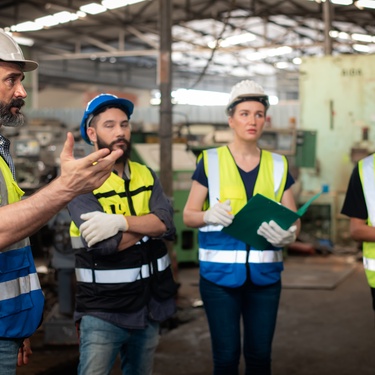
Ensuring employee safety is one of the most critical responsibilities of any workplace. Implementing effective safety measures protects staff, boosts morale, and maintains productivity. This blog will explore key safety initiatives workplaces can adopt to minimize accidents and create a secure environment for everyone.
Prioritize Safety Training and Education
A well-informed workforce is a safe workforce. Regular and comprehensive safety training ensures employees understand workplace hazards and the correct procedures to handle them.
Format your training to be dynamic and updated to address emerging risks, especially in industries prone to frequent changes. Sessions should focus on practical solutions and be mandatory for all departments to ensure consistent understanding.
Enforce Personal Protective Equipment (PPE)
Personal protective equipment is essential for preventing workplace injuries in many industries. Employers must provide the necessary PPE, ensure its proper use, and maintain its condition. This includes items such as gloves, helmets, goggles, and high-visibility clothing.
Supervisors should monitor usage and offer guidelines on how to wear and maintain equipment to maximize its effectiveness. Proper enforcement of PPE reduces risks and shows a company’s commitment to employee well-being.
Outlining Emergency Response Procedures
Emergency preparedness is crucial in tackling unforeseen workplace dangers. Clearly documented and communicated response procedures can save lives and minimize property damage during incidents like fires, chemical spills, or medical emergencies.
Employers should regularly conduct emergency drills to familiarize employees with evacuation routes and procedures. Assigning specific roles to team members for crisis management ensures a faster and more organized response.
Complete Regular Safety Audits and Inspections
Workplaces should conduct frequent safety audits and inspections to identify and address potential hazards before they lead to accidents. These inspections help verify compliance with safety standards and uncover areas that require immediate attention.
Engaging third-party safety experts can also provide an objective assessment and valuable recommendations for improvement. Regular audits go a long way in helping workplaces avoid injuries that lead to accident lawsuits and settlement talks while maintaining operational excellence.
Employee Involvement and Communication
Safety is a shared responsibility. Encouraging employees to participate in safety initiatives fosters a culture of accountability and awareness. Open communication channels allow team members to report hazards, suggest improvements, and seek clarification on safety policies.
Regular feedback sessions and surveys can provide insights into employee concerns and promote collaborative problem-solving. Building a culture of trust ensures everyone takes workplace safety seriously.
Offer Safety and Wellness Workshops
Organizing safety and wellness workshops is a proactive way to enhance employee knowledge and awareness. These workshops can cover topics such as proper equipment usage, work-life balance to minimize stress, and ergonomics to prevent workplace injuries.
Integrating wellness aspects such as stress management techniques and healthy lifestyle practices further supports overall employee well-being. Regularly scheduled sessions keep the workforce informed about the latest safety standards and foster a sense of community through shared learning.
Prioritize a Safety and More Efficient Workplace
Creating a safe workplace requires ongoing commitment and collaboration. By prioritizing these safety measures to protect employees, organizations can significantly reduce risks.
Investing in workplace safety enhances employee satisfaction and contributes to overall business success. Start taking action today to protect both your employees and your organization.
Bio: Casey is a passionate copyeditor highly motivated to provide compelling SEO content in the digital marketing space. Her expertise includes a vast range of industries from highly technical, consumer, and lifestyle-based, with an emphasis on attention to detail and readability.

























